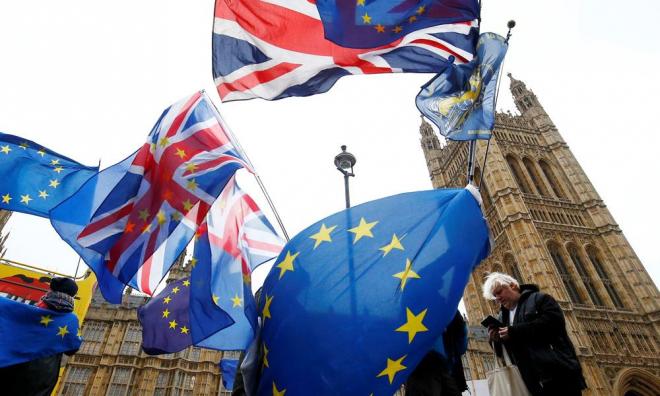
Published by Malay Mail, image from The Malaysia Insight.
The inauguration of the first hydrogen buses in Sarawak is considered as a good move for the country.
This brilliant initiative is a stepping stone towards realising the National Transport Policy (NTP) 2019-2030 since it is deemed to be affordable, safe, eco-friendly and reliable as mentioned by the Chief Minister, Datuk Patinggi Abang Johari Tun Openg.
The technology combines the fuel cell which is an electrochemical cell that converts the chemical energy of hydrogen and an oxidising agent (oxygen) into electricity.
In 2017, the press statement was made by the chief minister regarding the fuel cells and hydrogen (FCH).
Sarawak Energy Berhad (SEB) has also been appointed to conduct research on FCH, thus bringing Sarawak to a different level as compared to the other states.
The trial has lasted until August 2019 and the first debut appearance of the first hydrogen buses on the streets of the city has fascinated many people in Sarawak including other states as well.
Also, the research has been carried out almost two years before the hydrogen buses made their first commencement on January 2020.
The concept of the Internet of Things (IoT) has been utilised as well in the technology — the high-speed wifi and the H2Sarawak app with numerous features such as the live location, Google Transit integration and push notifications of interesting places and promotions.
Not just that, Sarawak was obviously devoted to the technology as the country has been building the hydrogen refuelling stations to boost the usage of the hydrogen-powered vehicles.
The chief minister also mentioned that hydrogen is projected to be the primary fuel of choice for the transportation sector and energy storage in line with the growth of technology in the future.
Yes, indeed because the advantages of FCH are inarguable as the technology is apparently better than the fossil fuel technology. In fact, the only by-products of FCH are water and heat which affect the environment in a positive sense.
In terms of ecology, FCH produces low emissions and noise and when it is used in a combined heat and power system, the efficiency level can be more than 80 per cent.
UTM Ocean Thermal Energy Centre (OTEC) demonstrated that a hydrogen-powered vehicle has better mileage and lower cost per kilometre compared to internal-combustion cars in ideal conditions.
Denso, an automative company from Japan, also mentioned that the hydrogen refueling only takes approximately three minutes and similar to refueling a conventional gasoline engine vehicle.
Based on the NTP which was launched by Prime Minister Tun Dr Mahathir Mohamad, the targeted thrust is the involvement of the green transportation system.
Specifically, the objectives of the thrust are to protect the environment, encourage the usage of low carbon mobility and cleaner fuels and also improve the quality of life of the rakyat through sustainable transport.
Also, it correlates with the eleventh thrust in the Sustainable Development Goals (SDG) by United Nations which is to make cities and human settlements inclusive, safe, resilient and sustainable.
Plus, it represents the efforts towards the liveability, mainly in the people’s quality of life, similar with the NTP.
Therefore, it can clearly be seen that the inauguration of the hydrogen buses supports the NTP but how far is the intervention of other authorities towards the initiative and what are the methods that support the essence of the NTP?
Since the state government has been striving remarkably towards their state development, the federal government and other state governments also should be making a move on this as well.
Although the NTP is depicted clearly by the government, the rakyat is actually looking forward towards the progress of the policy.
It is undeniable that there are a lot of initiatives made by the government such as the myBAS service that utilises the IoT and Artificial intelligence but the initiative is still lacking in its “green” components.
While Melaka has succeeded in operating electric bus transport services mainly for tourist transport, the service was discontinued in 2018 due to high maintenance costs.
This is why the chief minister mentioned that hydrogen is favourable compared to electricity because the batteries are the main source of electricity and should be disposed after three to five years.
Thus, the FCH must be exemplified by the related authorities towards other cities, especially in urban areas like Klang Valley, and since it only takes precedence over the tourists, the technology should also be dilated to Malaysians.
If the FCH is introduced in urban areas, the road congestion can be reduced as well as protecting the environment.
Considering that public transportation is one of the key elements in the NTP, the government should also come up with a solid improvement to encourage the use of public transportation among Malaysians.
Also, most of them still refuse to use it due to issues such as accessibility, reliability, safety concern and the punctuality.
Moreover, a research conducted by Universiti Kebangsaan Malaysia shows that a more reliable and accessible service is required to promote public buses as an attractive mode of transport.
Therefore, before implementing FCH, the improvement should be made towards the public buses in terms of services, reliability and accessibility.
In California, more than 30 public retail hydrogen refuelling stations have been installed and it shows that Malaysia is way behind. Hence, the expansion of FCH is definitely a must in Malaysia.
The hesitation of the current government towards FCH is also one of the limitations of the technology.
Although the implementation of FCH is costly and depends on the government’s budget, it would be valuable for Malaysia if it is properly allocated.
Malaysia should also have a proper monitoring system for the technology during implementation and a further research must be conducted before the technology is fully reliable. The FCH also should undergo several phases to test its features and capabilities.
In conclusion, FCH is one of the initiatives of the NTP and the green technology is one of the drivers of the future economy in the country.
Farhan Kamarulzaman is Research Assistant at EMIR Research, an independent think tank focused on strategic policy recommendations based on rigorous research.

